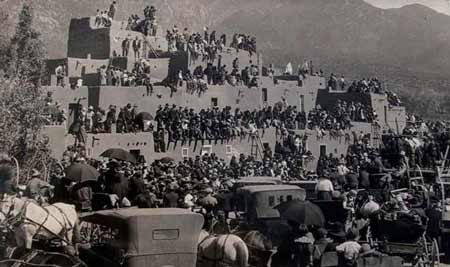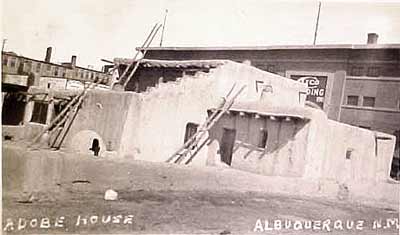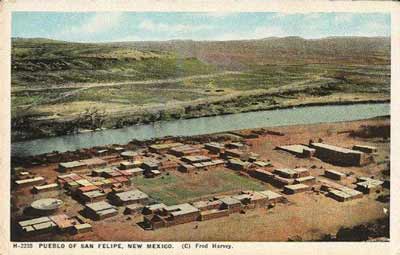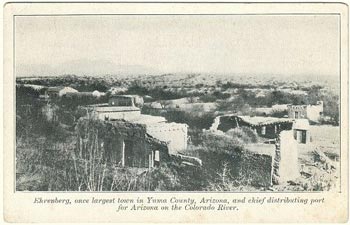
Throngs of anglo visitors overtake the Native American village of Taos Pueblo. One can only speculate the outcome of a reversed scenario.

Architecture, Art, Design, and Culture using of mud, clay, soil, dirt & dust.

Throngs of anglo visitors overtake the Native American village of Taos Pueblo. One can only speculate the outcome of a reversed scenario.

Adobe house in Albuquerque, circa 1926.

This postcard is captioned PUEBLO OF SAN FELIPE, NEW MEXICO. The back reads, The Pueblo lies on the east bank of the Rio Grande, about three miles from Bernalillo, and may be seen from the car windows en route to Albuquerque. The population is about 600. The church is one of the sights of the pueblo, having two towers and a large yard, the whole being enclosed with a high arched adobe wall. there is also the ever present Estufa or sacred meeting place where the chiefs congregate at times. The pueblo Indian while maintaining the mission churches still preserves many of the tribal customs. Circa 1915-1929
The Adobe Association of the Southwest
Northern New Mexico Community College
El Rito Campus in its wonderful old adobe buildings
Friday 16th Dinner/ Reunion and Plenary Session/Keynote Presentations/Dedications
Saturday 17th Presentations/Poster Sessions/Meals Continue reading “ADOBE CONFERENCE MAY 16 AND 17”

Taos Pueblo. Date unknown

Out for a Ride. Las Vegas, New Mexico. Circa 1910.
The flagship class at Northern New Mexico Community College, taught by Quentin Wilson, will be April 28 to May 9 in El Rito, NM. The class is Arches, Domes and Vaults, ADOB 112 and tuition is $54 plus $30 for fees and administrative items. Possible lecturers are Simone Swan and Greg Seelhorst who has 9 years experience in Africa and association with John Norton’s Woodless Construction. For more information visit the Quentin Wilson Website.

Old Adobe Church, Old Tucson, Tucson Mtn. Park. Tucson Arizona. Date unknown.

The title of this photo postcard reads, “Mexican adobe home with bake ovens in front”. Date unknown. Possibly New Mexico.

Photo of Ehrenberg, Arizona, once the largest town in Yuma County and chief distributing port for Arizona on the Colorado River, circa 1908